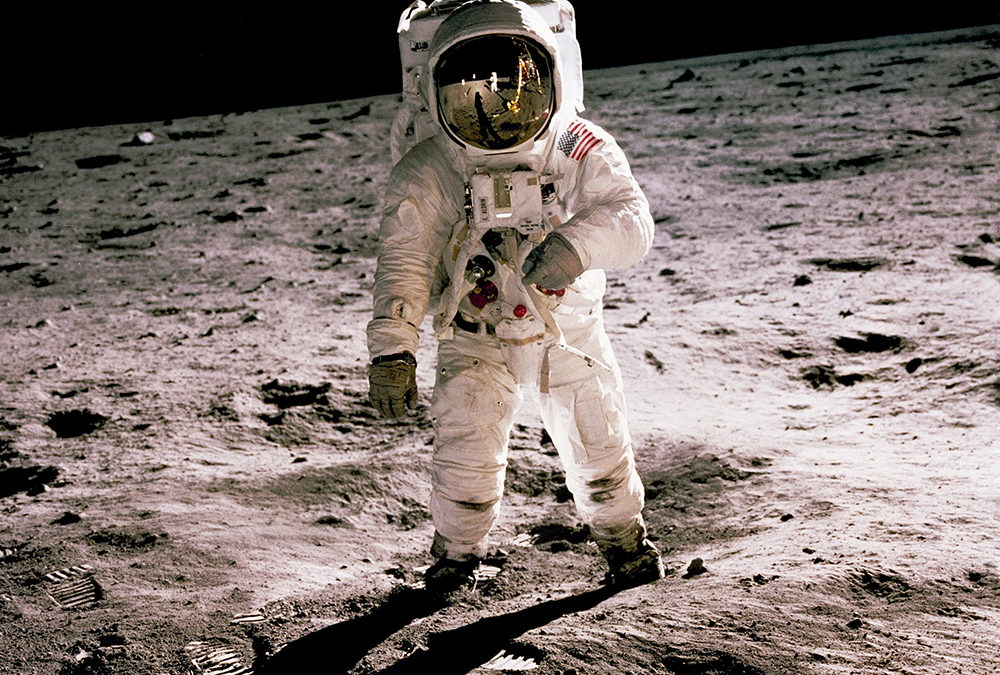Many of us will look up at the moon tomorrow (July 20th) and be amazed all over again that 50 years ago men first set foot there. Mankind’s greatest achievement has many lessons for today’s children. Here are five takeaways from the Apollo program that launched Neil Armstrong’s “giant leap for mankind”—ones we can challenge our students (and ourselves) to follow:
Set bold goals and stretch to reach them.
President John Kennedy’s challenge to land a man on the moon within nine years was astonishingly audacious, considering the United States had barely begun its space program. He challenged the nation to “go to the moon in this decade and do the other things, not because they are easy, but because they are hard.” An entire generation of Americans was energized by a seemingly unrealistic goal that nevertheless inspired tremendous hope. When Summit School challenges students to be global-thinkers and world changers, we want them to think big. A lot of hard work, commitment, growth and support is needed to get there, and with these they will achieve them.
Stop only when you reach your destination.
NASA Flight Controller John Llewellen was apparently quite the character. Driving on his way to work one evening, he lost control, ran off the road and plowed through a fence, sticking his car in the mud. So Llewelyn left the car and hiked miles to work at Mission Control. Another time, running late and unable to find a parking space, he drove up the building steps and parked outside the front door. This stunt cost him his parking pass, but Llewelyn kept at it, arriving at Mission Control the next day on a horse, and tying it up in the lot. Although his driving was another story, Llewelyn reminds us an our kids to stay in the saddle and keep riding forward until we arrive at their objective.
Progress isn’t painless.
When three astronauts tragically died in a fire during an Apollo 1 test, tremendous pressure arose to abandon the space program. A plaque at the astronauts’ memorial reads “Ad Astra Per Aspera”—“a rough road leads to the stars.” Instead of giving up, NASA overhauled the program top-to-bottom and rededicated itself to the goal. Our students need to develop resilience and coping skills that allow them to address and overcome the setbacks that are inevitable in life. As parents and educators, our temptation can be to swoop in and snatch them out of challenges, but it’s the process of them picking themselves back up and giving it another try, that truly helps them grow.
Responsible attitudes gain altitude.
“It won’t fail because of me” became a mantra for the thousands of technicians working on the Apollo program. In other words, the goal and the team come first, and I’m going to make sure I do my part to get us there. We know that collaboration and communication are essential skills for our students. When students take ownership of their own actions and work, as well as how they affect the team, class or school, their attitude helps them (and their peers) gain altitude.
Rise by creative problem solving.
To lift off the moon’s surface and return to earth, Armstrong and Buzz Aldrin needed to activate the lunar module’s push button circuit breakers. The problem was that one of them had knocked off the top of the button, leaving an open cavity. Something needed to be inserted into the hole to activate the electrical circuit, and a metal object or finger could trigger disaster. If the booster couldn’t be ignited successfully, Armstrong and Aldrin would be permanently stranded on the moon. After wrestling with this challenge, Aldrin, who disliked the high-tech zero gravity space pen issued by NASA, remembered the simple felt tip markers he’d brought instead. Incredibly, he had one accessible in his suit, the felt tip end fit perfectly, and the plastic insulated the circuit from shorting out. With the circuit breaker successfully activated by Aldrin’s felt-tip, the lunar module lifted off from the moon’s surface start its return journey to earth.
President Kennedy ended his daring 1962 challenge by comparing the path ahead to the ascent of Mt. Everest by British explorer, George Mallory, who when asked why he wanted to climb Everest, famously replied “…because it is there.” Kennedy continued, “well , space is there, and we’re going to climb it, and the moon and the planets are there, and new hopes for knowledge and peace are there.” Our students carry with them our own hopes for the world’s progress in knowledge, civility, and peace. With our boost, will be the ones to take many more giant leaps into tomorrow’s unknowns.
Mark Bistricky
Summit Head of School
Source material and anecdotes taken Wiseman, Richard. Moonshot: What Landing a Man on the Moon Teaches Us About Collaboration, Creativity, and the Mind-set for Success.

